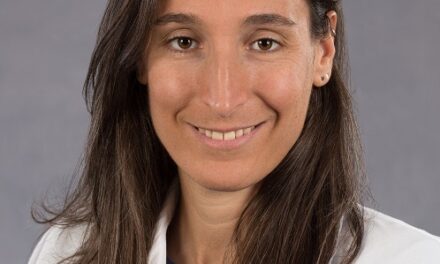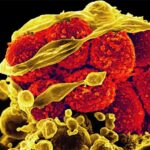.jpg) Each year, 1 in 7 women will develop breast cancer in their lifetime; the earlier it’s detected, the better the chances of survival. For decades, mammography has been the gold standard for detecting breast cancer. Now, there is new technology that is poised to revolutionize how breast cancer is detected. The Margaret W. Niedland Breast Center at Jupiter Medical Center is the first facility in Palm Beach and Martin counties to offer this technology – breast tomosynthesis, a state-of-the-art imaging technology that provides 3 dimensional views of the breast to increase diagnostic accuracy and find breast cancer at an earlier stage.
Each year, 1 in 7 women will develop breast cancer in their lifetime; the earlier it’s detected, the better the chances of survival. For decades, mammography has been the gold standard for detecting breast cancer. Now, there is new technology that is poised to revolutionize how breast cancer is detected. The Margaret W. Niedland Breast Center at Jupiter Medical Center is the first facility in Palm Beach and Martin counties to offer this technology – breast tomosynthesis, a state-of-the-art imaging technology that provides 3 dimensional views of the breast to increase diagnostic accuracy and find breast cancer at an earlier stage.Breast tomosynthesis is performed on a digital mammography unit that is able to acquire multiple low-dose images of a compressed breast from different angles. These images are then reconstructed and can be viewed individually or dynamically. Because of the 3D imaging capability, radiologists are now able to view breast tissue layer by layer, one millimeter at a time.
 This technology is extremely useful for all women, especially those who have dense breast tissue. On a traditional digital mammogram, dense breast tissue appears white and sometimes can hide masses, such as cancer. Breast tomosynthesis will overcome this obstacle and has been proven to provide an 8 percent increase in breast cancer detection with a 25 percent decrease in callback rates to find those cancers. Radiologists are able to see suspicious areas more clearly, decreasing the need to come back for additional imaging. This is a huge step toward alleviating fear and anxiety. Women who have the following indications will be good candidates for tomosynthesis: dense breasts, a baseline mammogram, or a greater than 15 percent calculated lifetime risk of breast cancer.
This technology is extremely useful for all women, especially those who have dense breast tissue. On a traditional digital mammogram, dense breast tissue appears white and sometimes can hide masses, such as cancer. Breast tomosynthesis will overcome this obstacle and has been proven to provide an 8 percent increase in breast cancer detection with a 25 percent decrease in callback rates to find those cancers. Radiologists are able to see suspicious areas more clearly, decreasing the need to come back for additional imaging. This is a huge step toward alleviating fear and anxiety. Women who have the following indications will be good candidates for tomosynthesis: dense breasts, a baseline mammogram, or a greater than 15 percent calculated lifetime risk of breast cancer.Thanks to the generous philanthropy of Suzanne Niedland De George and Lawrence F. De George, the new Hologic Selenia Dimensions 2D/3D mammography with tomosynthesis capability will be installed at the Margaret W. Niedland Breast Center by October 1, 2011 and fully implemented by January 2012. In addition, the facility will also install a state-of-the-art Hologic Discovery A bone density DEXA system, which has the capability to perform single sweep total body composition to determine bone health; Phillips IU22 Breast Ultrasound units with elastography capability, which detects and measures hard, cancerous breast tissue with certainty; positron emission mammography (PEM), which detects breast lesions as small as a grain of rice; and breast MRI, with a wide bore design to reduce anxiety and claustrophobia. These significant changes will enable Jupiter Medical Center to provide world class breast care to our community.


























